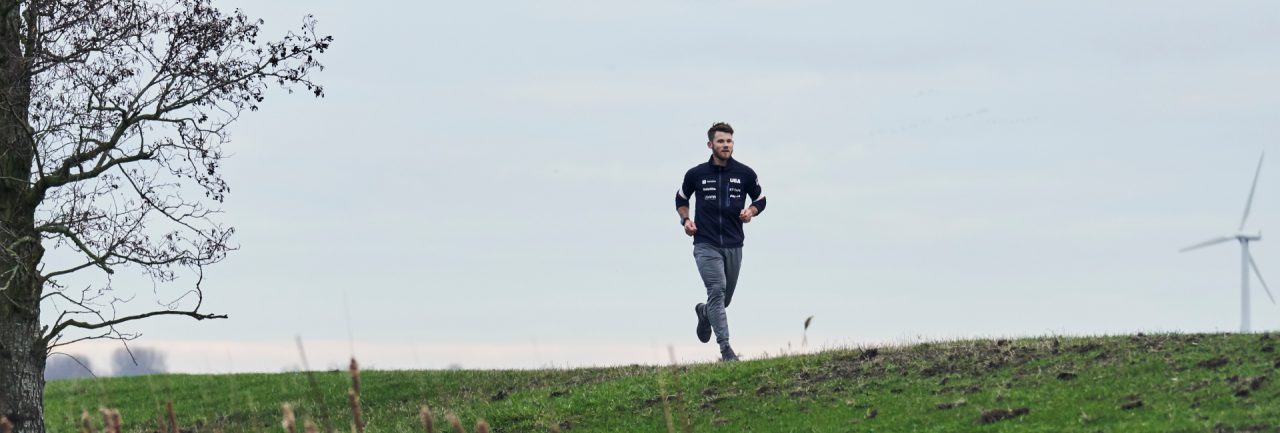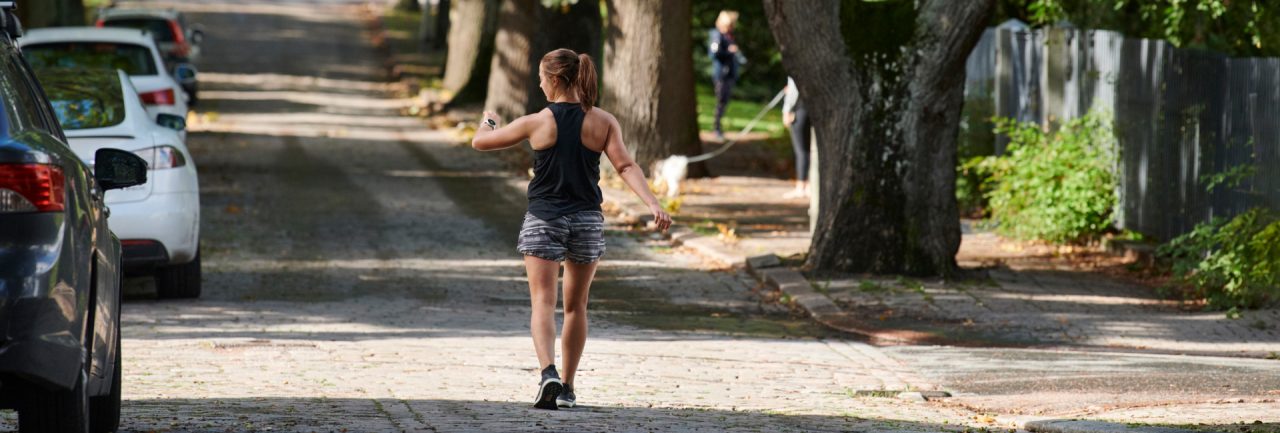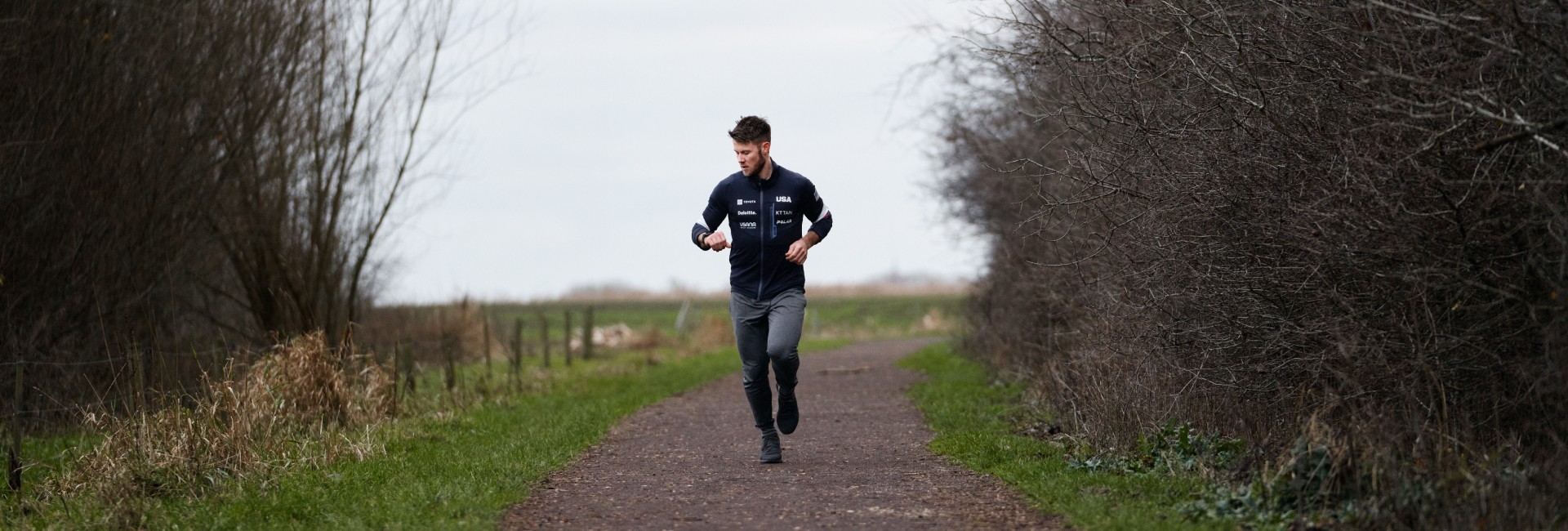Data says that Polar users typically walk for an hour and cover a distance of 4.5km during that time. The math is simple: the average walking speed is 4.5 km per hour. But is this a coincidence or is there some biological explanation why we tend to walk at that speed?
To understand the science behind walking, let’s think about race walkers for a moment.
You’ve probably seen it on TV multiple times. Exhausted, depleted of energy, and barely capable of taking another step, elite race walkers collapse as soon as they reach the finish line. These super athletes can walk faster than many of us can run, completing 50 kilometers in barely four hours, but while doing so, they seem to use all their energy.
By contrast, marathoners cover a similar distance much faster. Despite how intense and unforgiven the mythical 42k race is, marathoners always seem to have some energy left for a final sprint. Think of Eliud Kipchoge as he finished a marathon in less than two hours. He was all smiles and looked strong. Heck, some marathoners might even do some push-ups right before the finish line.
So, why do race walkers collapse and marathoners don’t? Walking is easier than running. Or is it?
The truth is that race walkers, when they complete 50km, don’t do 20% more work than a marathon runner. Instead, walking 50km as fast as possible takes nearly double the work and energy than running a marathon, even though the distance is just 8km longer.
Wait a minute! Marathon runners cover the distance at a mean pace of 20km/h whereas race walkers reach just 14 km/h. So, how come a race walker consumes so much more energy?
Let’s see what science says.
Understanding cost of transport

The key isn’t the rate at which athletes consume energy. Surely, marathoners burn more fuel per unit time – that’s why they finish much faster. But, at the same time, marathoners burn less fuel per unit distance traveled. This is measured by cost of transport.
Cost of transport expresses how much energy, measured in calories or joules, a person consumes per traveled kilometer per kilogram of body weight. In running, the cost of transport in relation to speed is roughly a straight line. This means that it doesn’t matter how fast you run, you always spend about 1 kcal per traveled kilometer per kilogram of body weight.
Walking is a different case. When we walk, the cost of transport forms a U-shaped curve. The transition point, where humans switch from walking to running, occurs, on average, at around 7 km/h. At that point, running becomes more economical than walking. That’s why when we walk very fast – to catch the bus, for example, we’re likely to start running without thinking about it.
The transition point, where humans switch from walking to running, occurs, on average, at around 7 km/h. At that point, running becomes more economical than walking.
Race walking is a peculiar sport because athletes are forced to walk beyond 7 km/h despite their natural urge to run. As a result, they consume 50% more energy per traveled distance as they would do if they ran.
That’s why elite race walkers competing during 50 km consume almost double the energy compared to marathoners. The marathon distance is already enough to drain most of the energy resources stored in one person’s muscles and liver. Race walking takes this to the extreme. After crossing the finish line, a race walker’s muscles and mind are so depleted of energy and willpower that it becomes literally impossible for them to keep on walking.
How the body knows when to walk and when to run
Most of us are not race walkers. And yet, we – our body – instinctively understands when it’s time to run and when it’s time to walk. But how does the body come to this conclusion? That’s something we may not fully know, but what we do know is that, for our body, running becomes more economical than walking when we go faster than 7 km/h. The body chooses to walk or start running depending on which activity is more economical.
For some years, biomechanical researchers have used ultrasound probes to look inside our muscles as we move. The research has revealed that calf muscle contraction velocity increases as we gain speed in walking. This is a good thing, but only to a point. The muscles don’t want to contract too fast or too slow – they want to contract at an intermediate speed to ensure they supply power in an economical manner.
When muscle contraction velocity becomes too fast while walking, we switch to running. At this moment – the walk-to-run transition point -, the long and elastic Achilles tendon helps calf muscles to decrease their contraction velocity and length close to an optimal range. It is then when the body learns that running will take less work than walking fast.
Walking can and is a very effective exercise. Even if you happen to hit exactly the minima of the walking cost of transport curve, you’ll be consuming nearly 80% of the energy per traveled distance as compared to running. If you push a little bit more, you’ll consume more energy and get more out of your walking workouts.
Average walking speed explained
Let’s return to the average walking speed of Polar users. It tends to be 4.5 km/h, or 2.8 mph. Such speed coincides with the minima of the U-shaped walking cost of transport curve. Therefore, it means that we select to walk at the most economical speed – the speed that consumes the least amount of energy per traveled distance.
This explanation also helps us understand why walking can be a very effective exercise. First, even if you happen to hit exactly the minima of the walking cost of transport curve, you’ll be consuming nearly 80% of the energy per traveled distance as compared to running. Secondly, walking causes less stress to your muscles and therefore, you can sustain a walking speed for a longer period of time and exercise for a longer time.
Get more out of your walking exercises

Once you know the science behind walking, it is easy to understand its benefits. Walking consumes lots of energy for a long time without the muscle strain of high-impact activities. To get more out of your walking, you only need to increase energy consumption by going beyond a comfortable speed and effort. Here’re are three ways to achieve this effect:
- Try power walking – Walk faster than usual to use more energy.
- Walk uphill… and downhill – Positive slopes increase you energy consumption, and negative slops make your muscles do eccentric work that builds strength.
- Practice Nordic walking – The use of walking poles will eventually consume more energy.
If you liked this post, don’t forget to share so that others can find it, too.
Or give it a thumbs up!
I like this article
Please note that the information provided in the Polar Blog articles cannot replace individual advice from health professionals. Please consult your physician before starting a new fitness program.




